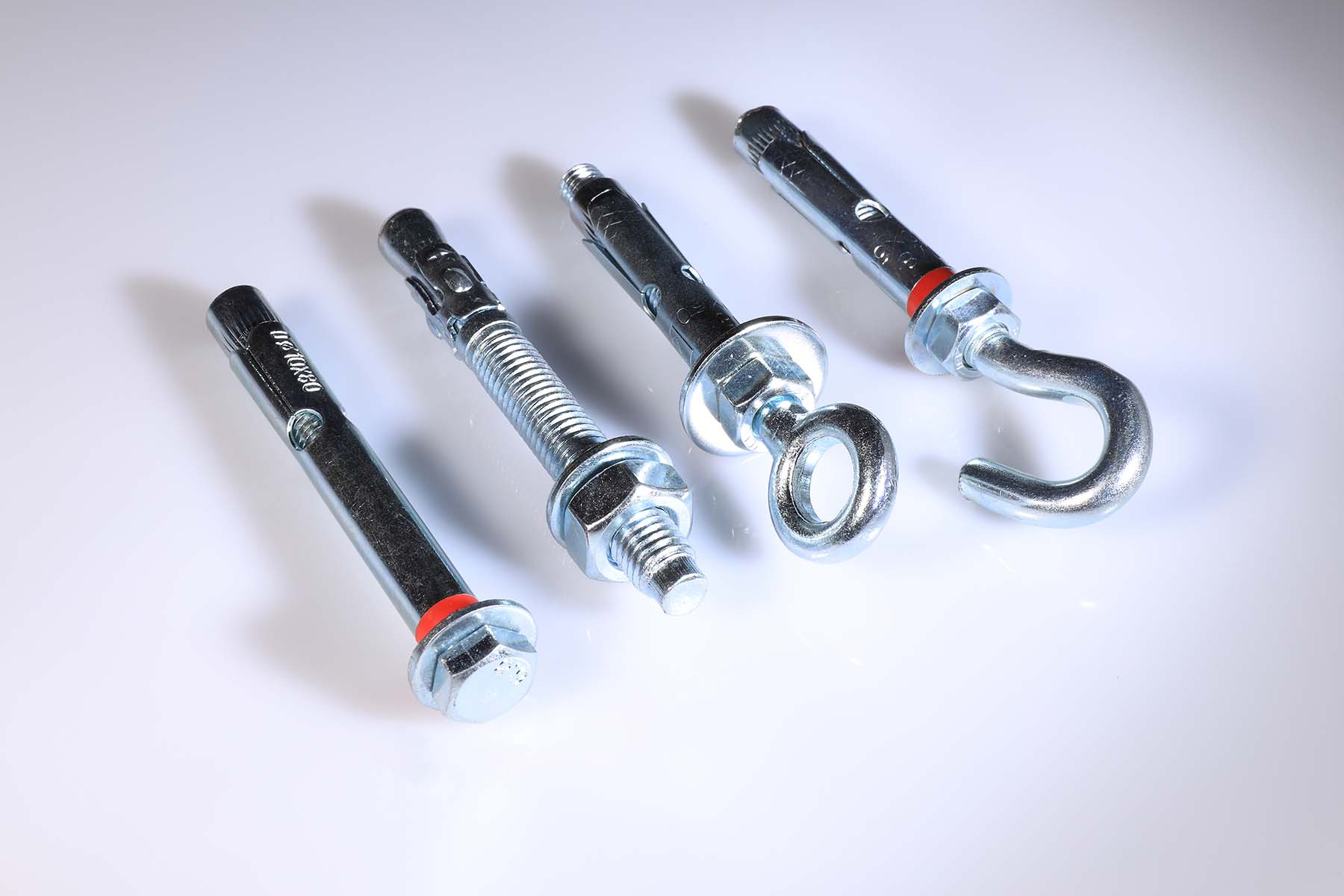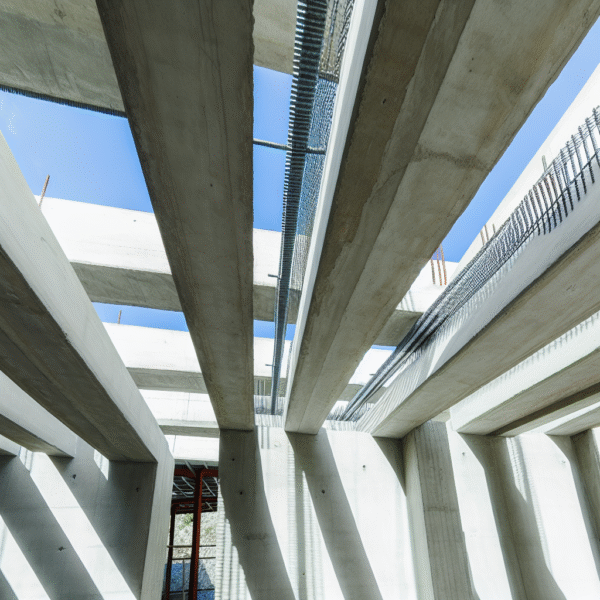Concrete anchors are vital tools for fastening objects to concrete surfaces, ensuring both stability and safety. Whether you’re mounting shelves, hanging heavy wall decorations, or securing machinery, properly installing concrete anchors is crucial to achieving a reliable hold. This guide will walk you through the different types of concrete anchors, such as concrete screws and anchor bolts, and the step-by-step process of installing them for dependable results.
Types of Concrete Anchors
Concrete anchors come in various types, each designed for different applications to ensure secure fastening to concrete surfaces. Two common types are concrete screws and anchor bolts. Concrete screws, also known as masonry screws, are ideal for light to medium-duty applications. They feature self-tapping threads that make installation quick and easy without the need for a plug or sleeve. Concrete anchor bolts, also known as wedge anchors, are heavy-duty fasteners designed for high-strength applications. As you tighten the nut, the bolts expand, creating a strong, secure hold. This feature makes them ideal for heavy-duty installations like machinery and structural supports. Choosing the right type of anchor for your project ensures both durability and safety.
Concrete Screws:
Concrete screws, also known as masonry screws or Tapcon screws, are self-tapping fasteners specifically designed to be installed directly into concrete, brick, or block. These screws have threads engineered to grip tightly into masonry materials, offering a quick and reliable solution for light to medium-duty applications. They are ideal for projects like mounting shelves or securing smaller fixtures.
Concrete Anchor Bolts:
Concrete anchor bolts, often referred to as wedge anchors or expansion bolts, are heavy-duty fasteners suitable for projects that require high pull-out and shear strength. These bolts expand within the concrete as the nut is tightened, ensuring a secure and durable hold. Anchor bolts are commonly used for securing heavy machinery, structural supports, or large equipment to concrete surfaces.
Step-by-Step Guide to Installing Concrete Anchors
Installing concrete anchors requires precision. Start by selecting the right anchor size and type for your project. Drill a hole using a hammer drill and masonry bit, ensuring it matches the anchor’s size. Clean the hole thoroughly, then insert the anchor and tighten it with the appropriate tool. Check the depth to ensure it’s secure, and allow the anchor to cure before applying any load. This process ensures a stable and durable hold for securely mounting objects to concrete surfaces.
Step 1: Choose the Right Anchor
Before beginning your installation, it’s essential to determine the type and size of the anchor needed for your project. Consider the weight and size of the object you’re fastening to the concrete, as well as the type of concrete surface. Select anchors that are strong enough to hold the weight of the object, ensuring a secure fit and proper functionality.
Step 2: Drill the Hole
To begin, use a hammer drill equipped with the appropriate masonry bit to create a hole in the concrete surface. The hole should match the diameter of the anchor you plan to use. Drill to the depth specified by the anchor manufacturer, ensuring that it is deep enough to accommodate the entire length of the anchor.
Step 3: Clean the Hole
Once the hole is drilled, it’s crucial to clean it thoroughly. Any debris, dust, or concrete fragments left inside the hole can affect the anchor’s ability to grip the surface. Use compressed air or a wire brush to clear out the hole, creating a clean space for the anchor to be installed.
Step 4: Insert the Anchor
For concrete screws, simply insert the screw into the hole and use a screwdriver or power drill to drive the screw into the concrete until it is flush with the surface. For anchor bolts, insert the bolt into the hole, and use a wrench to tighten the nut. This action will cause the anchor to expand within the concrete, creating a secure hold.
Step 5: Check the Depth
After inserting the anchor, check to ensure that it is fully inserted into the hole. It should sit securely without any wobbling, indicating that it is firmly embedded in the concrete.
Step 6: Apply Load Gradually
Before placing weight or pressure on the secured object, allow the anchor to set for the amount of time recommended by the manufacturer. This ensures that the anchor has properly embedded into the concrete, providing a long-lasting and secure hold.
Tips for Installing Concrete Anchors
To ensure a successful installation, always follow the manufacturer’s instructions specific to the type of concrete anchor you’re using. These guidelines will provide critical details on hole size, installation depth, and recommended tools. When drilling into concrete, use the correct masonry bit and a hammer drill, as these tools are designed to handle the toughness of concrete. For safety, always wear goggles, gloves, and ear protection to protect yourself from debris and noise. Additionally, ensure that the anchor is properly aligned and seated before tightening, as misalignment can lead to an insecure hold. Investing in high-quality anchors from trusted manufacturers will make a significant difference in the durability and performance of your installation, providing a long-lasting and reliable solution.
Follow Manufacturer’s Guidelines:
Always read and follow the manufacturer’s instructions for the specific type of anchor you’re using. This ensures proper installation and maximizes the anchor’s performance.
Use Proper Safety Gear:
When drilling and working with power tools, it’s important to wear safety goggles to protect your eyes from debris, as well as ear protection to minimize noise exposure.
Use High-Quality Anchors:
Investing in high-quality anchors from reputable manufacturers will provide you with reliable results. Cheap or low-quality anchors may not perform well and could lead to failure over time.
Final Thoughts
Mastering the installation of concrete anchors is key to securely fastening objects to concrete surfaces. Whether you choose concrete screws for lighter projects or anchor bolts for more heavy-duty applications, following these steps and adhering to safety guidelines will ensure a dependable and long-lasting hold. By selecting the right anchors and using proper installation techniques, you can confidently tackle various fastening projects, from mounting shelves to securing heavy equipment, with ease.




